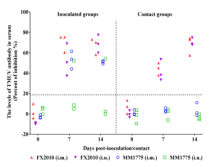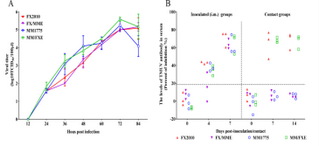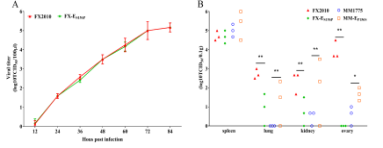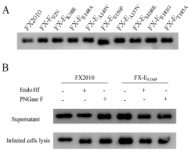
Researchers at Department of Avian Infectious Diseases, Shanghai Veterinary Research Institute, Chinese Academy of Agricultural Sciences (CAAS) have published a research paper on Journal of Virology about the molecular basis on the pathogenicity of Tembusu virus (TMUV) in ducks.
Since 2010, novel duck TMUV disease has spread widely in China, causing huge economic losses in the duck breeding industry. TMUV is a member the genus Flavivirus, family Flaviviridae. Duck TMUV, like other zoonotic mosquito-borne flaviviruses such as Japanese encephalitis virus and West Nile virus, can be transmitted vector-independently. To date, why these flaviviruses can be transmitted without mosquito vectors remains poorly understood.
The researchers proved the mutation S156P in the domain I resulted in disruption of N-linked glycosylation at amino acid 154 of the E protein and changed the conformation of "150 loop" of the E protein, which reduced virus replication in lungs and abrogated transmission in ducks.
These data indicate that the P156S mutation in the envelope protein is critical for mosquito-borne TMUV to expand the tissue tropism and is the molecular basis for mosquito-borne TMUV to obtain the transmissibility among ducks in the absence of mosquitos. The findings provided novel insights on understanding TMUV transmission among ducks.
More details are available on the bellow links:
http://jvi.asm.org/content/early/2018/06/07/JVI.00427-18.full.pdf






By Dawei Yan
yandawei@shvri.ac.cn

